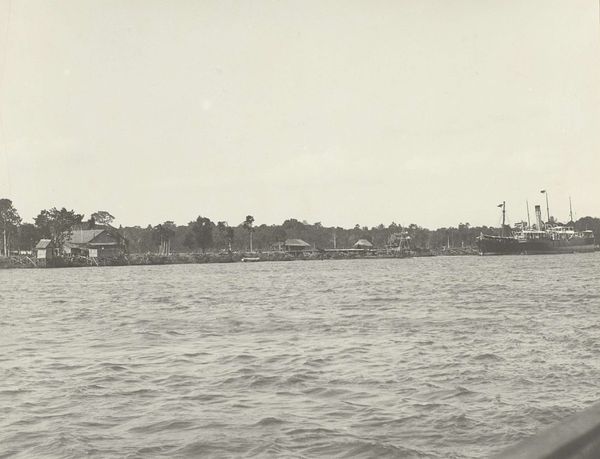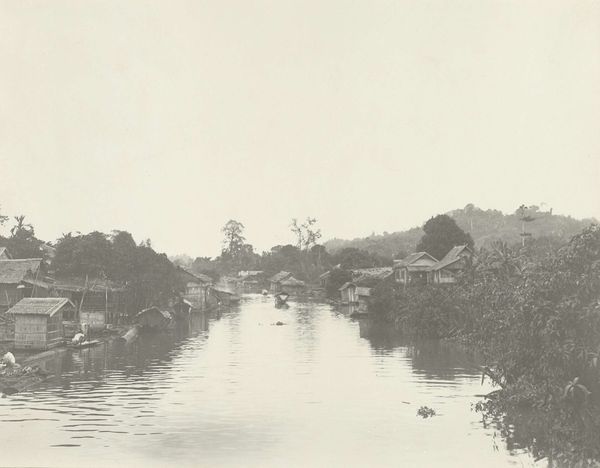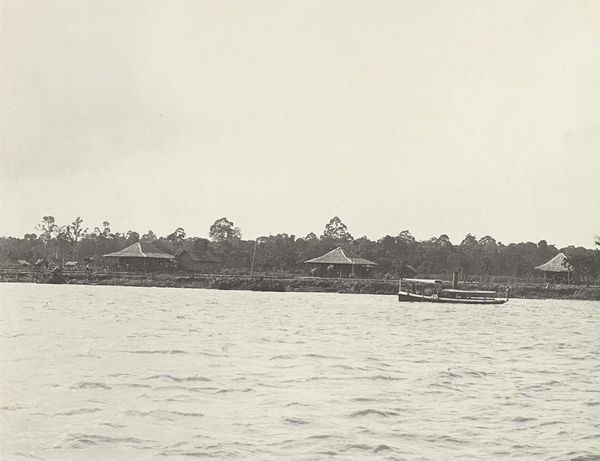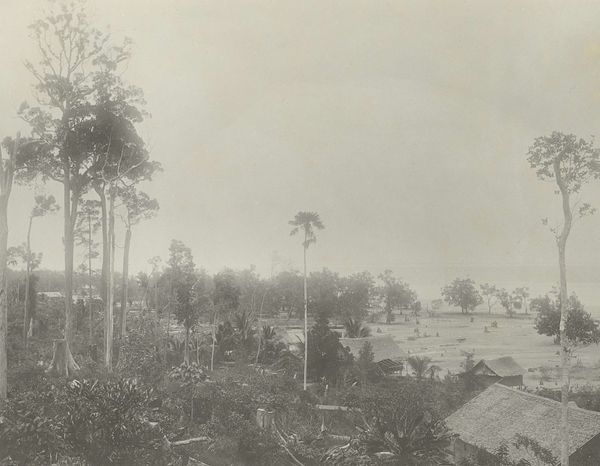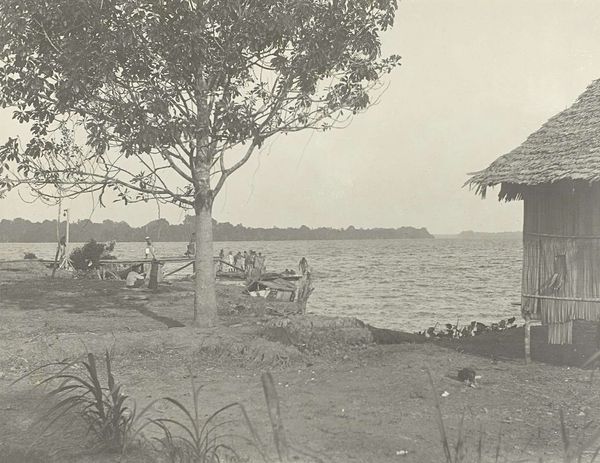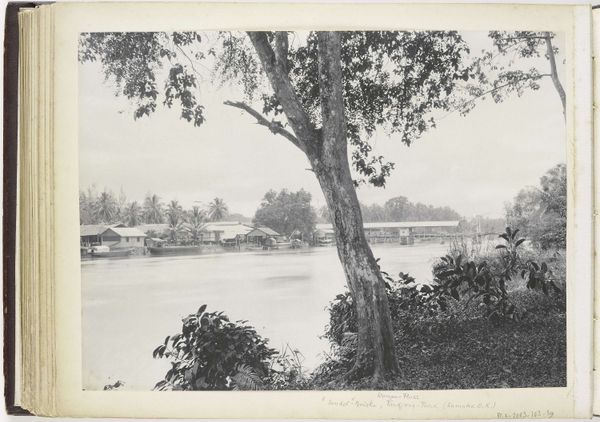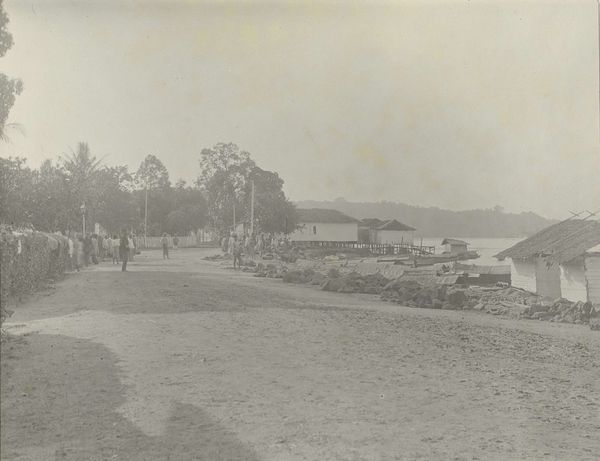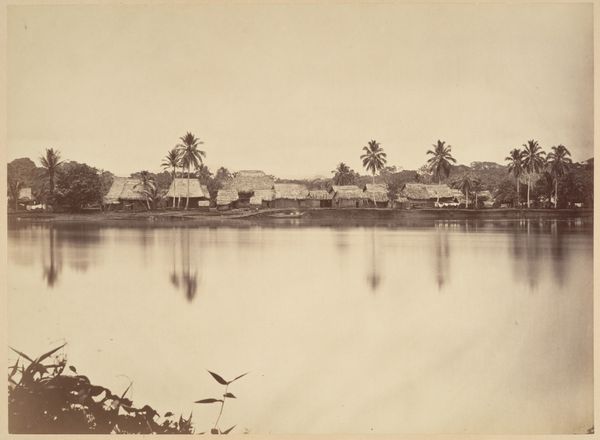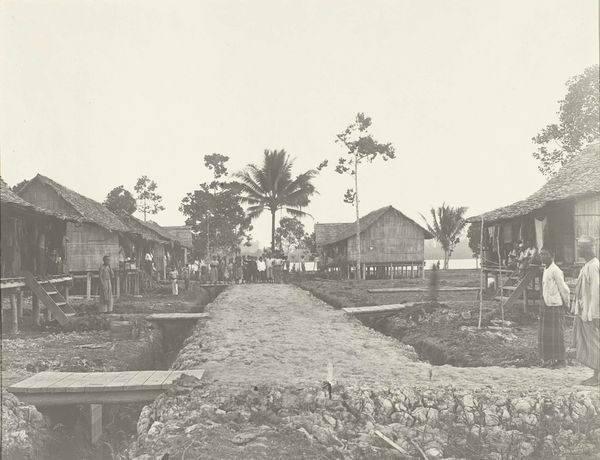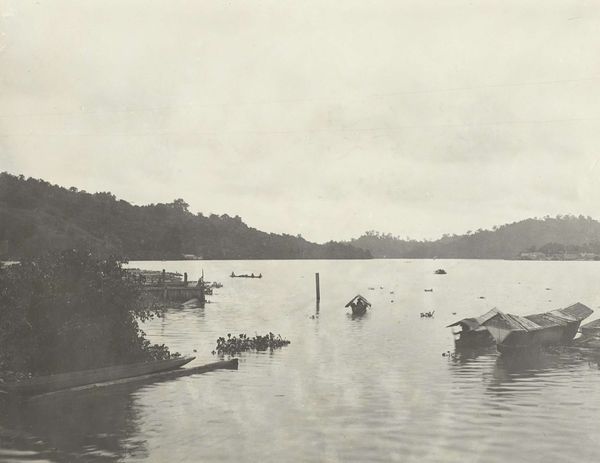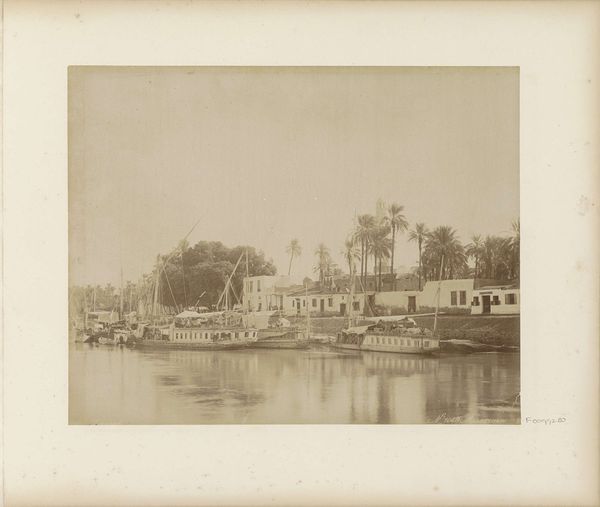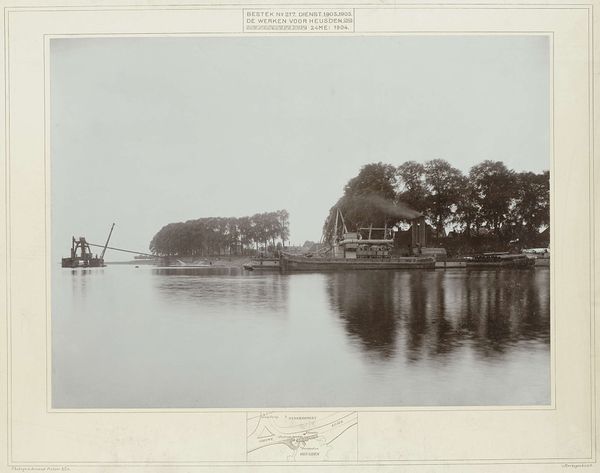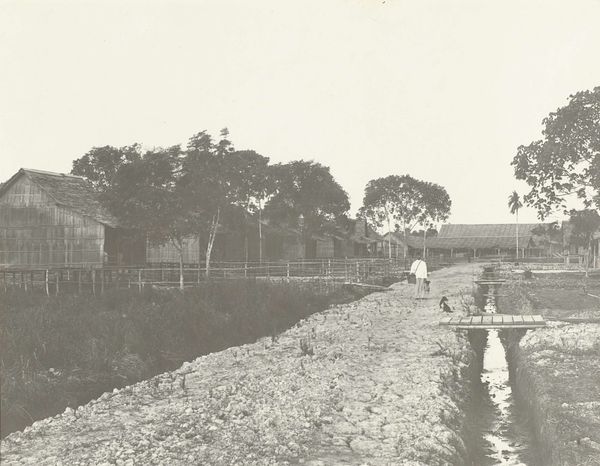
photography, photomontage
#
black and white photography
#
landscape
#
outdoor
#
outdoor photography
#
photography
#
historical photography
#
photomontage
#
monochrome photography
#
monochrome
Dimensions: height 215 mm, width 280 mm, height 385 mm, width 440 mm
Copyright: Rijks Museum: Open Domain
Curator: I find this monochrome photograph, “Dorp aan het water,” taken sometime between 1903 and 1907, remarkably still. There’s a quietude to the scene, wouldn't you agree? Editor: It’s placid, almost sleepy. The composition is striking; the horizontal band of the river dominates, and the village seems like a narrow afterthought clinging to the bank. What more can you tell me about this photograph? Curator: What interests me is that the photographer has chosen this specific vantage point. Why capture this village, from across the water? Was it simply an aesthetic choice or a reflection of the photographer's position in relation to the village itself? The socio-political landscape of that time must have influenced their gaze. Editor: The light is interesting—uniform and rather flat—which seems to deemphasize any sense of hierarchy. Perhaps a commentary on social levelling? Or a purely practical limitation of the photographic technology of the period. The subtle gradations in tone across the water create a sort of rhythmic texture, and how do you interpret the visual effect of the monotone palette itself? Curator: The choice of monochrome immediately historicizes the image, even to our contemporary eyes. This was a time of great change, a shifting colonial landscape with unequal power structures. The act of recording this scene would influence the understanding and memory of this place for many viewers through a lens. We can't extract this scene from a place’s colonial trajectory. Editor: Yet, within the constraints of that historical lens, the photograph exhibits some elegance in its balance. The ripples on the water in contrast to the stoicism of the village architecture... What do you think the village meant to those who resided there? Curator: Undoubtedly a central space for community and life, where people negotiate their existences within the frame of colonial and industrial exploitation. Consider who had the access to photography. It highlights the power structures inherent in that visual culture, and the importance of understanding who gets to tell these stories and why. Editor: Ultimately the enduring image conveys a story of the river. A continuous sense of rhythm created by the dark values of its waves draws me back to what the river could symbolize and mean for the community near the Dorp. The image as a window into history. Curator: Indeed. A reminder of the complex interplay between aesthetics, history, and the ever-present politics of representation.
Comments
No comments
Be the first to comment and join the conversation on the ultimate creative platform.
